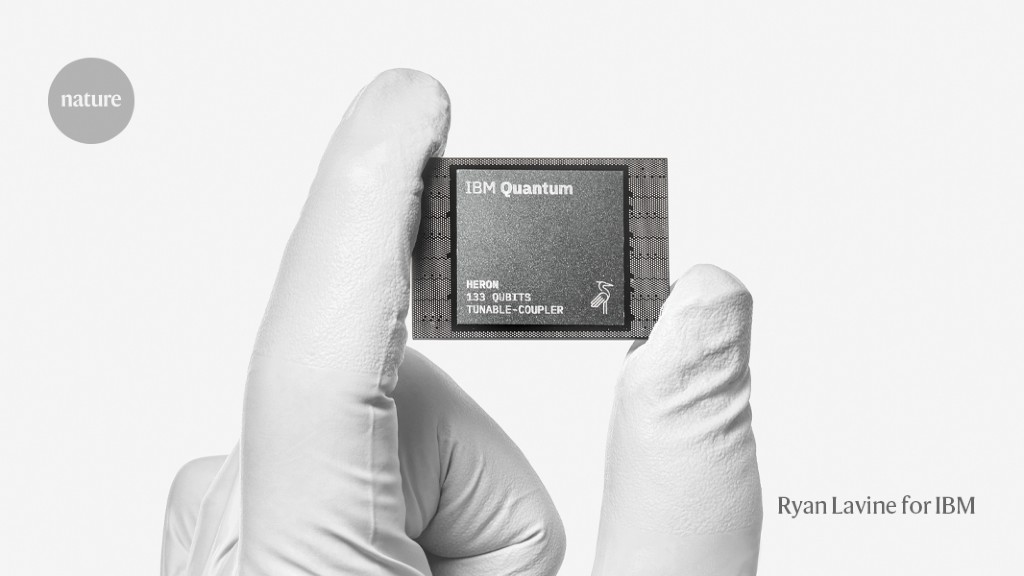Doom port pls, it’s the law.
It can play doom and not play doom and be in various stages in between.
So statistically, on average, it just about plays Doom
Plays 0.01% of doom and the rest is noise
I guess my passwords are in danger
Even in 20 years time, they’ll probably be in more in danger of phishing than from quantum computing.
(chuckles)
Jokes on them now they have to pay my electricity bill
They have already developed quantum proof encryption algorithms, something something latent spaces something something. Anyway, as long as the website has been updated to use the new algorithms you’ll be okay. You may just have to change your password one time in case it was compromised under the old encryption scheme.
Post quantum cryptography is under development and is slowly being introduced in order to evaluate it / prevent store-and-decrypt-later attacks… But this is generally in more niche applications. SSH recently adopted post-quantum cryptography for key exchange, but it uses a hybrid approach with traditional cryptography in case the post-quantum stuff proves to be not as strong as we think… Signal is experimenting with post-quantum stuff as well. As far as I know, though, post-quantum cryptograhy hasn’t seen wide deployment, and I don’t think any of it is used with HTTPS yet (certainly not commonly, anyway). Depending on what you care about this could be a problem. If you just care that nobody else can authenticate as you, then yeah, once everything is moved over to post-quantum stuff you can just change all your passwords and hopefully you’ll be good… If you care that the data is private then this is a big problem, and in theory somebody could scrape all of the messages you’ve sent and the contents of everything that you’ve done on the web (probably government agencies and not normal people, but maybe this information later gets leaked to the public too). This could also be a problem for authentication, for instance if you’ve ever logged into your bank account you’ve probably seen your routing numbers which somebody could take and use to transfer money, in theory.
It’s also worth noting that, as far as I know, we don’t actually know for certain that the post-quantum cryptography we’ve developed is secure. I think all we know is that it isn’t vulnerable to Shor’s algorithm, but there could be other exploits we don’t know about. This is of course also true for all of the cryptography we use today too. We don’t actually know how hard factoring into prime numbers is, for instance, but these algorithms have been in use for a long time and have been under a lot of scrutiny so we have more confidence in them.
Not really, there are quantum-resistant crypto algorithms
Wait, seriously? That’s quite a jump from the last one I heard about.
Also: it’s actually 1,121 qubits, even more impressive.
Isn’t that also quite the small form factor? I still had the fridge sized copper monstrosities in mind when thinking of quantum computers
The attached picture says 133 qubits, so whatever that chip is (edit: Heron) it’s not this thing.
IBM’s post (that the article links) says:
Breaking the 1,000-qubit barrier with Condor
We have introduced IBM Condor, a 1,121 superconducting qubit quantum processor based on our cross-resonance gate technology. Condor pushes the limits of scale and yield in chip design with a 50% increase in qubit density, advances in qubit fabrication and laminate size, and includes over a mile of high-density cryogenic flex IO wiring within a single dilution refigerator.
So, it sounds like this is actually another fridge sized system.
These qubits oscillate at microwave frequencies where the quantum information is stored. This means they need to be kept at a temperature where the microwave frequencies are completely devoid of any thermal noise. For microwave frequencies, this temperature is just a few millikelvins above absolute zero. Unfortunately, the temperature is required due to the fundamental nature of thermal noise due to temperature. Making the qubits out of room temperature superconductor would not solve the problem of the need to cool them down - unless they can be operated at higher frequency. There are quantum computers made using light/optical photons which do operate at room temperature because optical photons are at much higher frequency which has no thermal noise even at room temperature.
So, in conclusion, everytime you hear about superconducting qubit, they are always in a giant dilution refrigerator which gets bigger for more qubits as more connections from room temperature to qubits are needed.
without a room temperature super conductor it will always be mostly cooling
It looks more like Darth Vader’s water heater.
From what I remember the chip itself is pretty small, the size is all due to the cooling component.
Also keep in mind you’ve probably seen a development version of a quantum computer, where things are set up to be easily accessible to allow fixing and tinkering, without regard for size and optimization of space.
I may be mistaken but the fridge sized copper monstrosity is the system that cool the quantum chip, so unless they miniaturized the cooling system it didn’t change.
Yeah, from my understanding, the chip itself is about the same size as a CPU chip.
It’s faster than Moore’s law, but I don’t know whether it can be sustained.
For years, IBM has been following a quantum-computing road map that roughly doubled the number of qubits every year. The chip unveiled on 4 December, called Condor, has 1,121 superconducting qubits arranged in a honeycomb pattern. It follows on from its other record-setting, bird-named machines, including a 127-qubit chip in 2021 and a 433-qubit one last year.
will it run crysis tho?
Yes, but your 1650 is still the bottleneck
Ha, only gamers get that joke.
“Now we hope to understand in better detail how these works and what to do with them”
It’s worth noting that the laser was much the same way. It was described early on as a solution in search of a problem, and lasers have had an incredible impact on technology.
Great, so when operating systems have finally reached relative stability, the future holds crashes coming from the chipset.
telegram gotta speed up
1000? Wasn’t that the threshold for breaking RSA crypto, or something?
There is a difference between logical and physical qbits. Several physical qbits need to be combined to yield one logical qbit.





